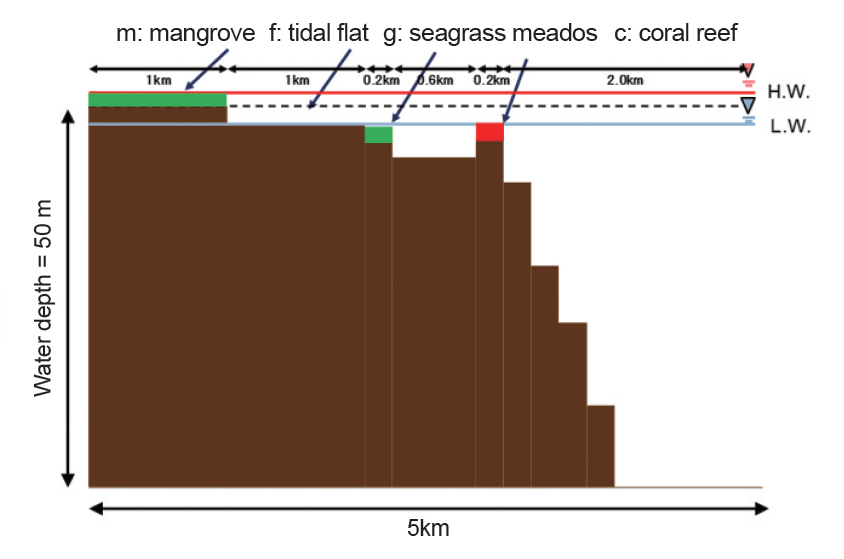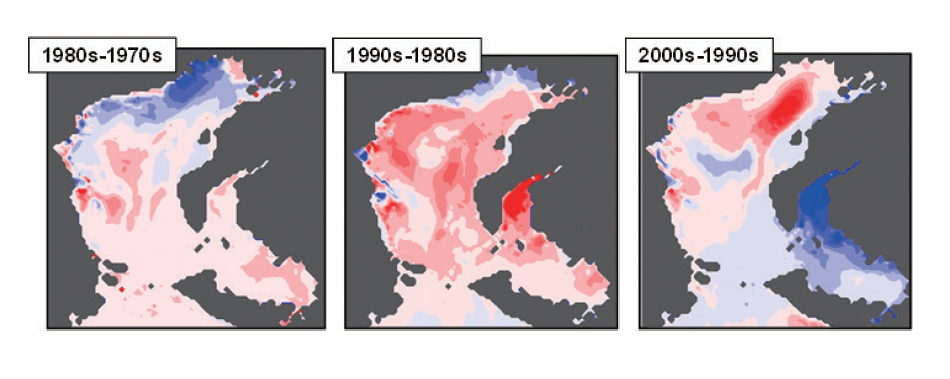Major Research 4A. Research on Enhancement and Utilization of Coastal Ecology
Background and Objectives
Rich ecosystems in coastal zones include tidal flats, seagrass meadows, and coral reefs. Coastal zones are valuable places for the global environment. However, during the era of rapid economic growth, intense socio-economic activities caused the deterioration of water quality in coastal inner bays and enclosed waters, resulting in ecosystem damage. Thanks to subsequent countermeasures, water quality has gradually been improving in some coastal zones; however, recovery of the coastal-zone environment including ecosystems remains a formidable challenge.
On the other hand, new challenges include the utilization of coastal-zone functions for mitigating climate change, as well as countermeasures against large-scale oil spill incidents from maritime industrial complexes and other facilities.
Therefore, in the themes of this research, we will conduct research and development with the following goals: further restoration of the coastal-zone environment, coastal-zone utilization for climate-change mitigation, and establishment of technologies to counter large-scale oil spill incidents.
Research topics
Research and development comprises the following three subthemes:
1. Research on coastal-ecosystem utilization
Regarding ecosystem-based countermeasures against the impacts of climate change, we will conduct research on alleviating climate change including carbon storage and atmospheric CO2 uptake, both of which utilize ecosystems (blue carbon). In addition, we will expand our technological development internationally. We will also develop a technology to create coastal ecosystems which suffer less damage due to earthquakes and tsunamis and which recover rapidly. Through such technologies, we can continuously reap the benefits of the ecosystem.
2. Research on the-water environment simulation and analysis in inner-bay
We will develop the following methods regarding the acquisition and utilization of environment-observation data: a new method of analyzing marine monitoring data covering currently operating ferries and monitoring posts and others; and a new method of observing parameters for which common methods cannot obtain adequate results. We will also re-analyze existing underutilized environmental data, and will use multi-functionalized GPS wave-observation buoys to continuously observe areas for which data has not been obtained. In addition, we will integrate weather/marine/ecosystem models and utilize in real time the environmental observation data. Through these means, we will develop a system which comprehensively predicts problems that frequently occur in inner bays, including red tides, blue tides, and hypoxia.
3. Research on countermeasure technologies against sea oil spill
Regarding technologies for dealing with spilled oil, in addition to developing technologies to resolve conventional on-site challenges, we will conduct new research and development on the following: oil-gathering equipment loaded on next-generation oil-recovery ships; and systems which comprehensively recover or treat oil and which can address large-scale oil-spillage accidents. In addition, we will establish an information system for the risk management of oil pollution based on simulation technology, understand the behavior and mechanisms of oil spilled from dangerous facilities in waterfront areas due to natural disasters including earthquakes and tsunamis, and conduct research and development of quantitative prediction techniques and mitigation techniques for spilled oil. Through such approaches, we will develop innovative countermeasure techniques against oil pollution and improve the ability to respond oil pollution.
Activities in FY 2016
Regarding global-scale estimation of the mitigation and adaptation functionings of blue carbon on climate change, we used methods of measuring carbon dynamics, the development of which we have almost completed, and then initiated on-site investigation in coastal zones overseas (estuaries of the Ganges River, India). We also established a numerical model to evaluate coastal-ecosystem functions which affect climate change-induced changes in coastal-zone environments.
Regarding research on integrated techniques for evaluating and predicting coastal benthic ecology and ground environment dynamics, we established an integrated system for measuring and investigating wide-ranging ground environment dynamics covering the supratidal-intertidal-subtidal zones of tidelands and sand coasts and then conducted onsite feasibility studies.
In research on the water environment simulation and analysis in inner-bay, we took into account the transitions in the coastal-area utilization of inner-bay areas and used a numerical simulation to evaluate changes in the water quality of innerbay areas. We also developed methods for assessing the biodiversity in coastal ecosystems. In addition, data-assimilation analytical approaches that reflects the observational data into simulation results were investigated to establish more accurate prediction systems.
In the research and development of new techniques to prevent various types of spilled oil including natural disasters, we investigated the range of advection and expansion of oil that has spilled from port facilities by tsunamis, investigated the applicability of techniques to prevent the drifting of spilled oil to port facilities, and designed a real-time hazard map of oil spill. Then we developed a beta version of a WWW continuous system for oil-drifting simulation and hazards (server client system).

Model of predicting geographical changes in coral-reef areas

Dissolved oxygen concentration in the bottom layer of Ise Bay (red: decreased, blue: increased)



